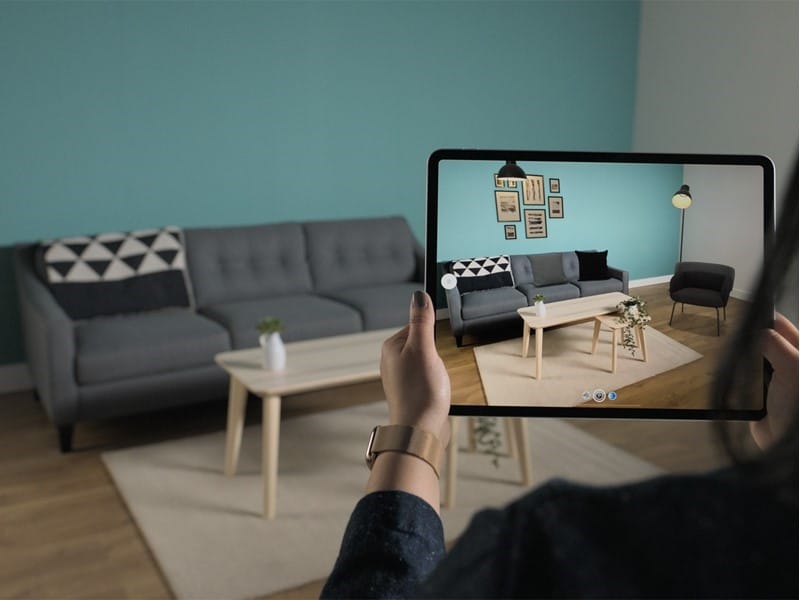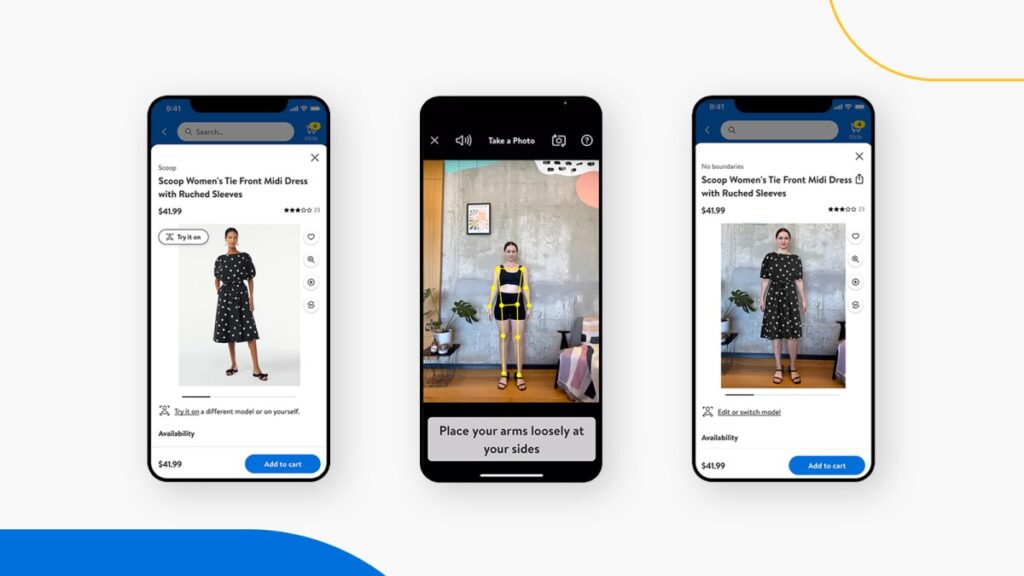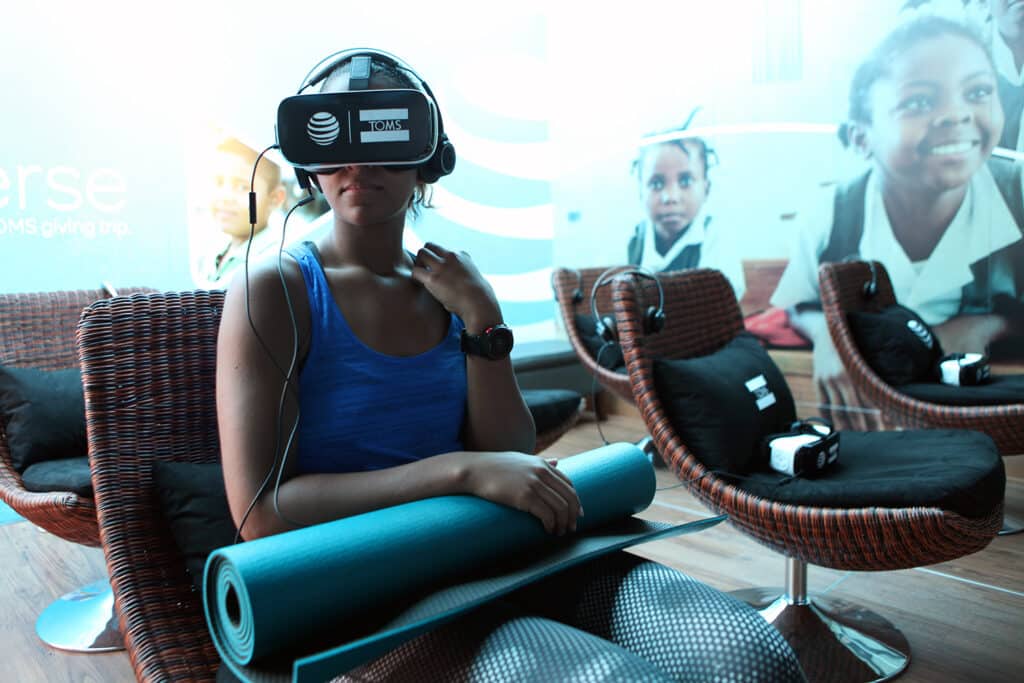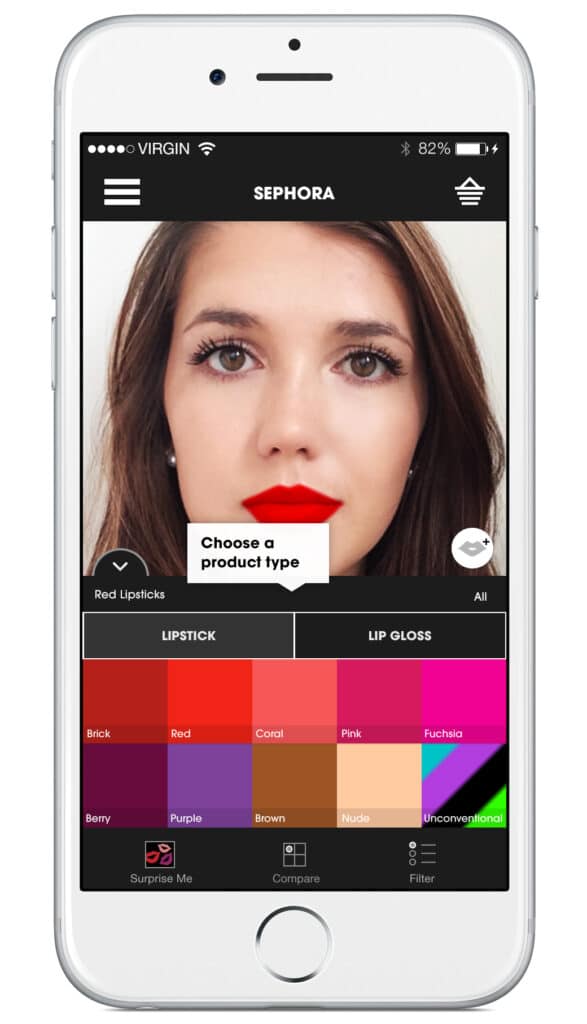Innovations in the digital marketing realm continue to advance at a rapid pace these days, providing marketers with new possibilities and tools to reach customers in more profound and memorable ways.
While AR and VR are not entirely new to marketing, these immersive experiences are getting better and better, with artificial intelligence (AI) now helping to enhance them even more.
Do you or your marketing team want to know how best to use virtual and augmented reality to attract and impress your audience?
We’ve provided you with information, tips, and examples to help you gear your strategy toward success and the future.
Download this post by entering your email below
What are Virtual Reality (VR) and Augmented Reality (AR)?
When it comes to choosing either VR or AR, it is essential to understand what they are and how they differ. While both alter reality, how they go about it uniquely differs.
With virtual reality, your audience enters into a generated, virtual environment of your choosing.
This environment can be realistic or entirely created and fantasy-like. The user immerses themselves in the new reality with the use of physical aids such as goggles, glasses, headphones, or speakers.
Augmented reality, on the other hand, creates an overlay of visual, sensory, or auditory elements for the customer’s real surroundings, changing that reality in some way.
It is not about transporting your audience to a new world. Instead, it enhances the one they are currently experiencing. Providing AR can be as simple as putting an app on a smartphone, so it’s more accessible.
With VR and AR, consumers no longer have to count on their imaginations or conjure up visual images in their minds. You are providing the vision for them.
How are VR and AR Being Used in Marketing?
The wave of the future involves using virtual and augmented reality in marketing to attract a bigger audience, collect data, and better position your promotional strategy to meet the individual needs of your customers.
These new ways of presenting reality can connect consumers to your brand in entirely new ways.
VR and AR technologies continue to expand marketing possibilities for companies in every industry.
These technologies are currently being used in marketing in the following ways:
To create a more personalized experience
By developing virtual or augmented environments that are dynamic in some way, marketers are showing consumers how life will be when they use certain products or services.
The use of VR or AR allows you to move beyond videos and create a more personalized experience.
An example of this is how the home furnisher IKEA uses AR to market its products.
IKEA provides its target audience with a virtual furniture storeroom, which helps to simplify decisions regarding home decorating and interior design.
Its IKEA Place app allows a customer to select a product in the catalog, point their smartphone at a specific area in their home, and see how the product would look in that location.

To provide a try-before-you-buy approach
The newest technology can create retail demonstrations where the consumer digitally tries on a product, such as clothing, accessories, or makeup.
This try-before-you-buy approach saves time for the consumer and provides the answers they need to make faster decisions.
Shoppers see what a certain piece of clothing or other product will look like on them without having to go into a physical store.
Beauty product and fragrance retailer Sephora has employed this approach successfully.
Using its beauty try-on feature, customers can see how they would look while wearing different makeup products.
To find the look they want, consumers can digitally apply eye shadow, lipstick, false eyelashes, and numerous other items.
To show more about a brand
By adding AR or VR to marketing campaigns, you can provide additional information about your brand to the audience.
You can use VR to immerse them in a world that highlights your research and development activities, or show them how you are making a difference with your social campaigns.
As this technology spreads to more industries, businesses are finding new ways to promote their brands, boost customer retention and loyalty, and increase sales.
While many examples of its use involve B2C companies, AR and VR are valuable for B2B marketing as well.
How AI is Enhancing Virtual and Augmented Reality in Marketing
Available technologies continue to evolve and enhance the capabilities of AR and VR marketing systems.
Artificial intelligence is one of those evolving technologies that is making waves.
While AI in marketing is still in the beginning stages, its impact is already impressive.
With the addition of AI algorithms, VR and AR experiences can achieve new levels of personalization and interaction. For example, they can adapt to user actions and respond in real time.
AI can also enhance your marketing efforts with predictive analytics; that is, it can predict the behavior of users to produce more customized and personalized experiences.
For instance, in a virtual store, AI can create a more customized shopping experience by analyzing shopper preferences and behaviors in an effort to recommend suitable products or services.
As some companies learn how to benefit from the use of AI in their marketing campaigns, others are already jumping in head first.
Take Walmart, for example. As people shop online for clothes, they can use the try-on app powered by AI. They start by selecting a model similar in size and height to theirs.
The app uses deep learning and image processing in real time to simulate how the clothes will look on that self-model.

Benefits of Using Virtual and Augmented Reality in Marketing
As the use of AI-assisted VR and AR in marketing becomes more common, clear benefits are emerging.
Increases engagement and interactivity
With the creation of more immersive experiences, you provide your audience with more personal ways to engage and interact with your brand, product, or service.
Improves brand awareness
The technology can capture your target audience’s attention and also introduce your brand to others who are intrigued by the VR or AR opportunities you offer.
This new audience may not have otherwise considered purchasing your product or service.
Achieves better customer insights
By gathering data on how consumers are interacting with your brand through AR or VR, you can glean better customer insights.
Using these insights, you could enhance future marketing campaigns and increase personalization going forward.
Quickens the buying process
As consumers continue the buyer’s journey, the purchasing stage can happen faster thanks to AR or VR experiences.
A consumer can virtually try on your product, whether it be clothing, shoes, eyewear, or beauty products, and decide more swiftly.
Challenges and Limitations of VR and AR Marketing
While there are valuable advantages to employing VR and AR in your marketing strategies, there are hurdles as well.
Higher costs
A significant challenge involved in VR and AR marketing is the greater expense of using these advanced technologies.
Creating an effective virtual or augmented experience requires specialized software and equipment that is not always available to smaller businesses due to the cost. It also takes time and resources to incorporate these technologies into your marketing campaigns.
On the customer’s side, AR or VR devices can come at a hefty price that many are not willing to pay.
Technical issues
As relatively new and evolving technologies, AR and VR do not have standards yet.
This contributes to technical problems. Customers may experience technical issues with their equipment or your company’s app.
This can be frustrating, causing them to mistrust your brand.
The need for specialized skills
Since the technology is so new, relatively few people have the necessary specialized skills.
You will need to train your marketing team to use AR or VR software and equipment.
This training takes time and effort, pulling them away from their other responsibilities.
Future Trends and Opportunities for VR and AR in Marketing
As technical standards rise and the cost of consumer-oriented equipment goes down, marketers will see an increase in opportunities to use VR and AR.
Customers, too, will grow accustomed to immersive experiences, and their expectations will rise.
As such, marketing teams will need to adapt to changing trends in order to appeal to customers. They’ll have to find ways to incorporate VR and AR into their marketing strategies.
The use of AI will continue to increase as well.
It will become more mainstream and enhance everything from content planning for AR and VR immersive experiences to user data compilation that better personalizes these experiences.
Your business needs to adapt and learn how to use these developments to your advantage.
Companies can start preparing now by experimenting with AR and VR and also by understanding the power of AI. One beneficial way to accomplish this is to use the technology in other areas, such as content planning and creation.
Best Practices for Using VR and AR in Marketing
While best practices are still in the making, here are a few that you can follow right away.
Know your target audience to determine whether VR or AR will be acceptable and accessible to them.
To start, you may want to create an AR immersive experience for customers to access on their phones.
From there, they may expect more ways to interact with you and your products, which could lead to the development of virtual reality offerings.
Create immersive experiences that align with brand values. Know what your brand represents and be sure that every experience reflects that. Also, discover new ways to share those values.
Examples include showing how your social initiatives are making an impact or involving users in the process of developing a new product that you will offer.
Two AR and VR Marketing Success Stories
Companies are already successfully using VR and AR in their marketing campaigns.
To help get you and your team ready for the future of VR and AR, take a look at these two success stories.
IKEA
As mentioned above, home furnisher IKEA created an immersive experience for its customers, allowing them to visualize how different pieces of furniture will look in the rooms of their homes before making purchases.
With the app, you can try out an entire furniture set or just one preferred piece, such as a chair or sofa.
As a result, the company’s app has received over 5,000 ratings on Apple’s app store, averaging 4.6 on a scale of 5 stars.
The most frequent comment in the reviews is that the app and the ability to try before buying improved the overall customer experience.
TOMS
The shoe brand TOMS decided to provide a VR experience that focuses on their humanitarian effort to donate one pair of shoes for every pair purchased by consumers.
With the use of VR headsets in stores, customers get to virtually experience what it is like to join the staff on a trip to give away these shoes.
In the experience, the customer gets to watch children receive the shoes, seeing their smiles and excitement while also observing their daily living conditions.
This approach tugs at the heart and connects with the emotions of customers.
Consequently, sales increase as customers realize that they can do good at the same time as they buy a product they like.
According to the company, reactions to the campaign have been incredibly positive and highly emotional.
The results of other brands’ VR and AR campaigns are also showing promise, and more will undoubtedly do so in the future.

Prepare for the Future of AI-Enhanced Marketing Strategies
As technology improves, so too can your marketing strategies.
The use of virtual and augmented technologies can enhance the user experience in ways unimaginable in the past.
Likewise, AI technologies will continue to improve and factor into more and more parts of your marketing. You don’t have to wait, however.
Start now by improving your content planning and creation with the use of AI.


![[ROCK NA] [EBOOK SEO] Complete Guide](https://rockcontent.com/wp-content/uploads/2024/06/banner_Search-Engine-Optimization.png)





